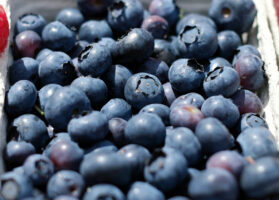Increasing import and logistics costs weigh on the mind of importers
Overview of grapes from Peru in the U.S. market, complemented by charts from Agronometrics. Original published on October 7, 2022.
As they look ahead at the South American season, importers are relying on the experience of last season to help make this one as smooth as possible. “We’re better prepared for this import season because we have a year of experience with the turbulence of logistics. I believe between the shipping lines and the exporters in South America, it’s getting streamlined,” says Roland Berndt of Sierra Produce. “I’m not saying the woes of shipping have gone away. But let’s hope that with experience and collaboration it can improve. We’re optimistic it will improve.”
Grapes from Peru
One commodity Sierra Produce will begin bringing in from South America mid-next month are grapes from Peru. “We’re expecting Peru to be up about 15 percent over last year in volume,” says Berndt, noting that retailers generally transition from California grapes to South American grapes between late November and mid-December. Meanwhile, the Chilean grape season, which should begin in December is anticipated to have similar to less volume than it did in 2021. “A lot of that has to do with what the costs are going to be and what growers’ alternatives are.”

Source: USDA Market News via Agronometrics.
(Agronometrics users can view this chart with live updates here)
Logistics + import costs
Indeed, costs are particularly on the mind of importers. “Boxes, packing materials, utilities, fertilizer, inland trucking, port charges and all the transportation costs have all gone up. I don’t think any costs are going to decrease,” Berndt says. While he notes that some routes such as Asia to the U.S. have dropped in terms of pricing, it’s not particularly related to produce per se and is more around shipping general consumer goods. “Shipping lanes from South America to North America or Europe to North America–those prices have not dropped. They went up last year and I’m not seeing them coming down,” he says.
High logistics costs are going to feel like a double whammy for importers. “We’ll have to pay more to import the product but on top of logistics costs going up, other import costs have gone up substantially as well so it’s making things even more expensive,” says Berndt.
That means that pricing at retail is largely going to dictate demand for the import season. “There’s talk about inflation but there’s also talk about recession and people having less money to spend,” Berndt says. “Due to inflation, we are asking our customers to help cover some of the additional costs, but retailers in turn are going to have to keep their retail prices high as well. There will need to be promotions in place to help move product, but higher prices at the check stand due to inflation will not help demand.”
The News in Charts is a collection of stories from the industry complemented by charts from Agronometrics to help better tell their story.
Access the original article with this (Link)






